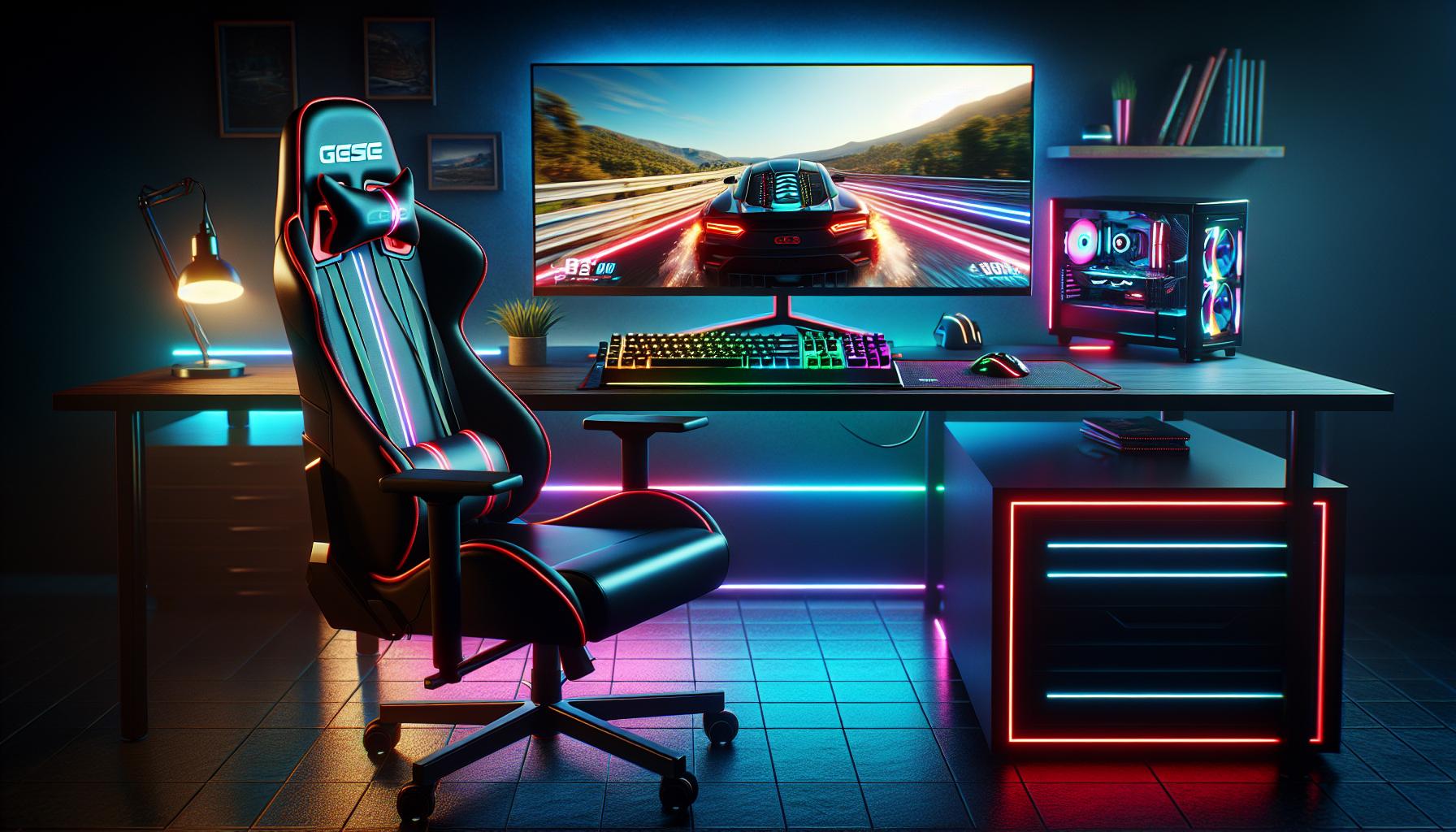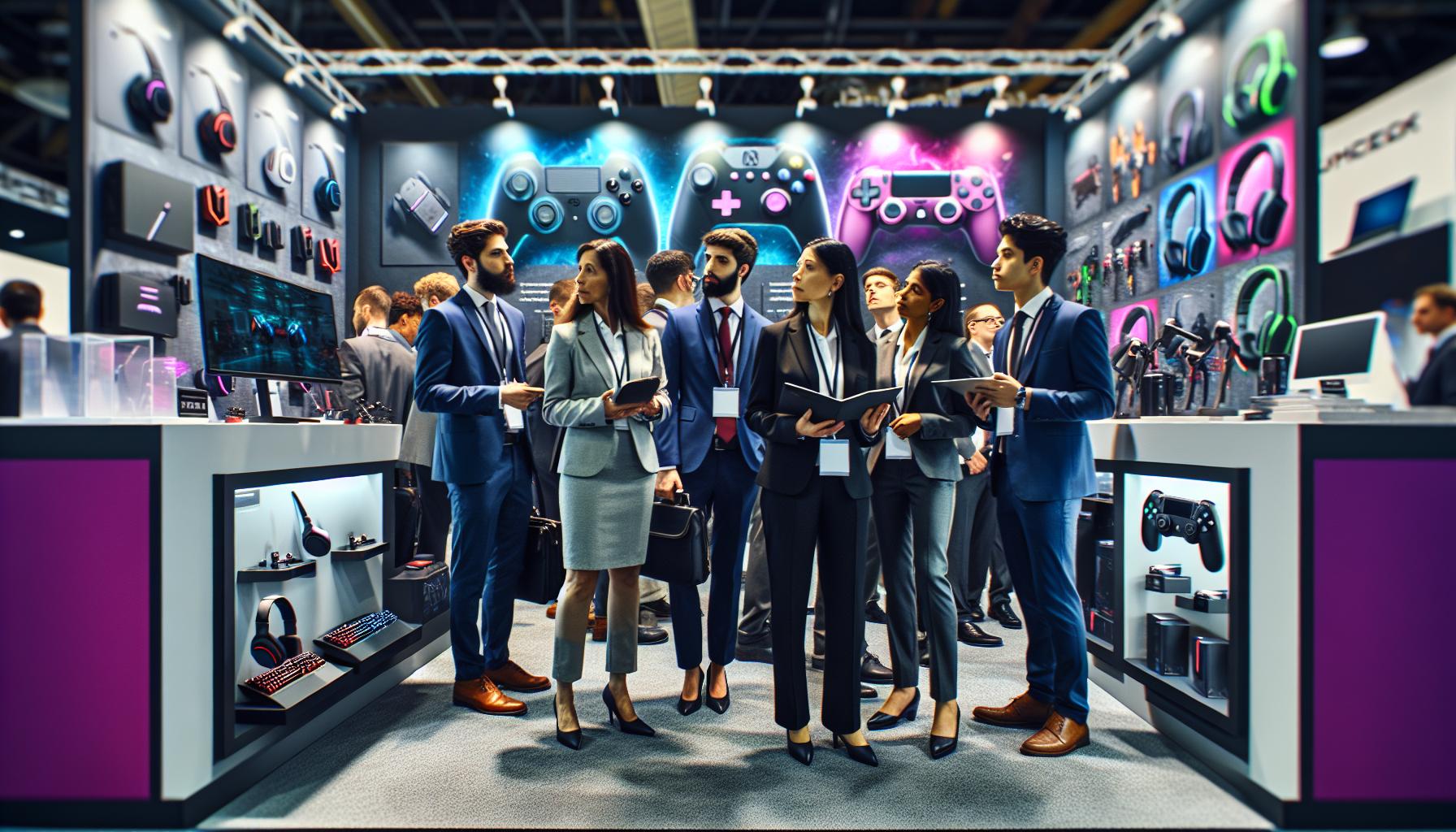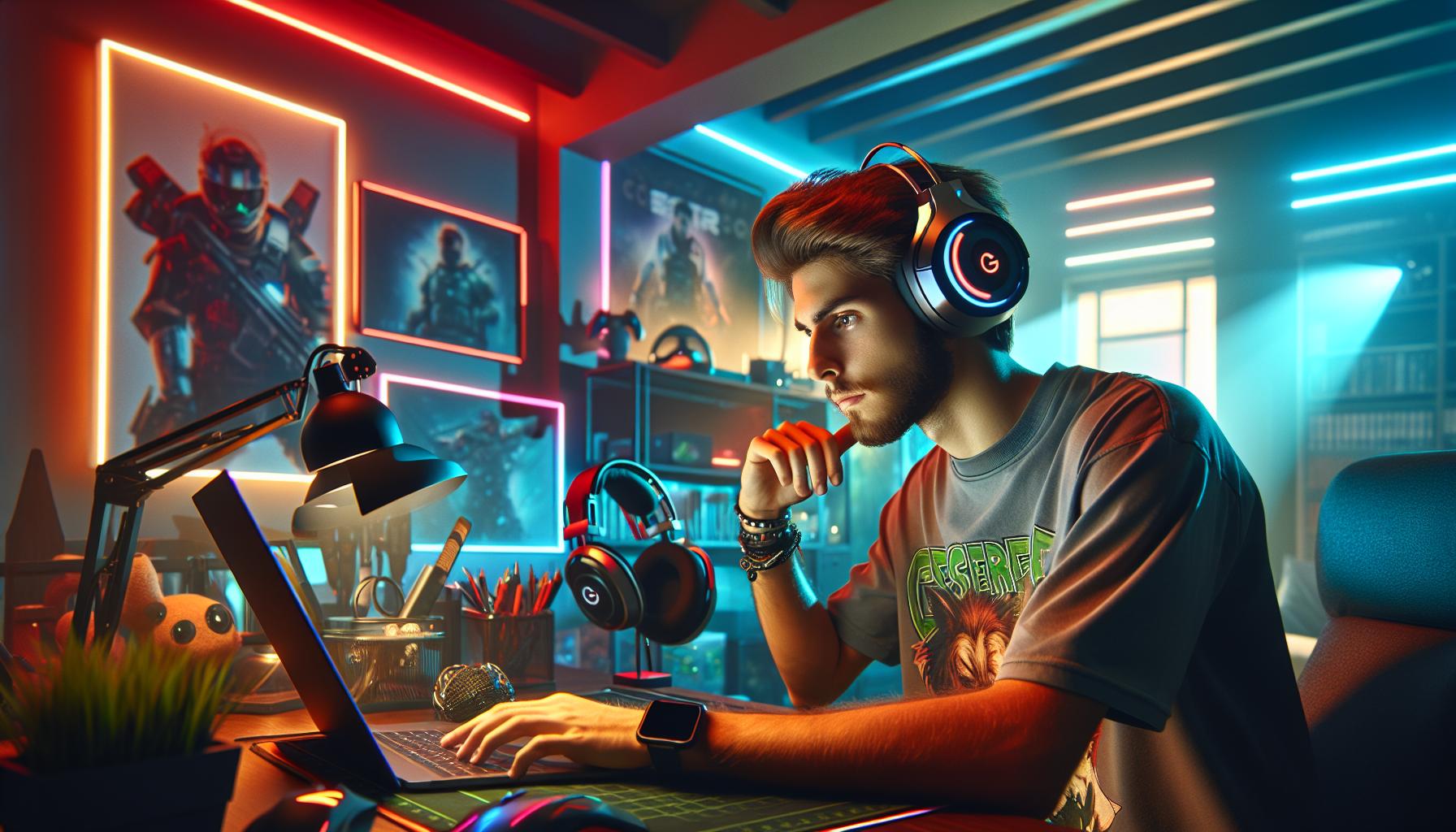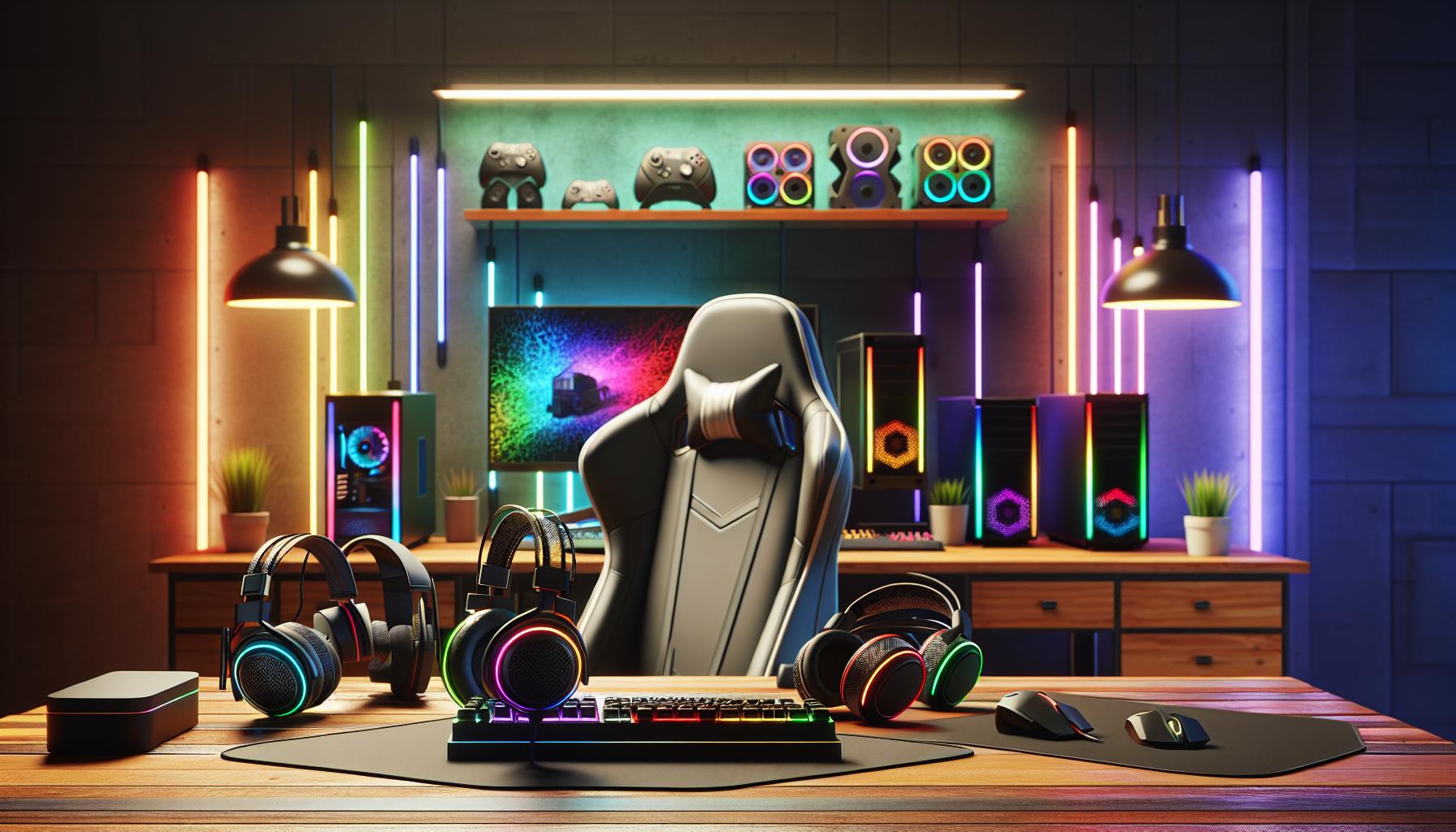Gaming accessories have become the secret sauce in every player’s quest for the perfect gaming experience. From ergonomic controllers to RGB-lit keyboards wholesale gaming accessories present a lucrative opportunity for retailers looking to level up their business game. The gaming industry’s explosive growth shows no signs of slowing down making it the perfect time to dive into this thriving market.
For entrepreneurs and established businesses alike wholesale gaming peripherals offer impressive profit margins and a constantly evolving product line. Whether it’s premium headsets customized mousepads or specialized gaming chairs there’s an endless array of products to satisfy the growing demands of casual and professional gamers. The key to success lies in understanding market trends identifying reliable suppliers and maintaining competitive pricing strategies.
Wholesale Gaming Accessories
The wholesale gaming accessories market represents a dynamic sector within the gaming industry, characterized by diverse product offerings and multiple distribution channels. This segment encompasses various gaming peripherals essential for both casual and professional gamers.
Market Size and Growth Potential
The global gaming accessories market reached $6.1 billion in 2022, with projections indicating a compound annual growth rate of 9.8% through 2028. Asia-Pacific dominates the market share at 38%, followed by North America at 28%. Mobile gaming accessories experience the fastest growth, expanding at 12.3% annually due to increased smartphone gaming adoption. The market demonstrates particular strength in premium peripherals, with high-end gaming headsets generating $1.2 billion in revenue.
| Region | Market Share |
|---|---|
| Asia-Pacific | 38% |
| North America | 28% |
| Europe | 22% |
| Rest of World | 12% |
Key Industry Players and Manufacturers
Leading manufacturers control specific market segments through specialized product lines:
- Logitech dominates the gaming mouse sector with 35% market share
- Razer leads gaming keyboards production across 150 countries
- HyperX captures 40% of gaming headset sales in North America
- Corsair maintains 25% market share in premium gaming peripherals
- SteelSeries specializes in competitive gaming equipment with presence in 67 countries
The manufacturing landscape includes strategic partnerships between hardware producers and esports organizations, creating exclusive product lines targeting professional gamers.
Popular Categories of Gaming Accessories

Gaming accessories span multiple categories, each serving specific functions to enhance gameplay performance. These essential peripherals range from input devices to comfort-focused equipment.
Controllers and Input Devices
Gaming controllers include console gamepads, keyboards, mice, steering wheels, joysticks, and racing pedals. High-end mechanical keyboards feature customizable RGB lighting, anti-ghosting technology, and programmable macro keys. Gaming mice incorporate adjustable DPI settings, ergonomic designs, and precision sensors for competitive gaming. Specialized controllers like fight sticks for fighting games, racing wheels for simulation games, and VR controllers for virtual reality expand gaming possibilities. Premium brands such as Razer, Logitech, and SteelSeries dominate the input device market with professional-grade peripherals.
Audio Equipment and Headsets
Gaming headsets deliver immersive audio experiences through features like surround sound, noise cancellation, and crystal-clear microphones. Premium models from HyperX, Corsair, and SteelSeries offer wireless connectivity, extended battery life, and customizable EQ settings. Desktop speakers, sound cards, and audio mixers complement headsets for varied gaming setups. Professional streamers rely on standalone microphones, audio interfaces, and mixing boards to enhance their content creation. Bluetooth earbuds designed for mobile gaming provide portable audio solutions with low latency connections.
Gaming Chairs and Furniture
Ergonomic gaming chairs incorporate features like lumbar support, adjustable armrests, and reclining mechanisms for extended gaming sessions. Racing-style seats from brands like DXRacer, Secretlab, and AKRacing use premium materials including PU leather, mesh fabric, and memory foam padding. Gaming desks integrate cable management systems, mousepad surfaces, and height adjustment mechanisms. RGB lighting elements in furniture pieces create immersive gaming environments. Accessories like footrests, cup holders, and monitor stands complement gaming furniture setups.
Sourcing Wholesale Gaming Accessories

Successful wholesale gaming accessory sourcing relies on establishing reliable supplier relationships and understanding pricing dynamics. Strategic supplier selection and cost management create a foundation for profitable retail operations in the gaming accessories market.
Finding Reliable Suppliers
Alibaba, Global Sources and Made-in-China serve as primary B2B platforms for connecting with gaming accessory manufacturers. Trade shows like CES, Gamescom and Canton Fair provide opportunities to meet suppliers face-to-face and examine product quality. Several verification methods ensure supplier legitimacy:
- Requesting business licenses and certification documentation
- Checking third-party verification services like Dun & Bradstreet
- Ordering product samples to assess quality standards
- Reviewing supplier ratings and testimonials from past clients
- Conducting factory audits through inspection companies
Pricing and Minimum Order Quantities
Wholesale gaming accessory pricing varies based on order volume, product specifications and supplier location. Entry-level MOQs typically range from:
| Product Category | Minimum Order Quantity | Price Range (USD) |
|---|---|---|
| Gaming Mice | 50-100 units | $8-15 per unit |
| Headsets | 100-200 units | $12-25 per unit |
| Keyboards | 50-100 units | $15-30 per unit |
| Controllers | 100-200 units | $10-20 per unit |
- 30% deposit with 70% balance before shipping
- Letter of Credit for orders over $50,000
- PayPal or wire transfer for smaller orders
- Net 30 terms for established business relationships
Building a Profitable Resale Business

A profitable gaming accessories resale business requires strategic pricing structures paired with targeted marketing efforts. Success in this market segment depends on maintaining competitive margins while effectively reaching the right audience.
Setting Competitive Retail Prices
Retail pricing for gaming accessories follows a markup strategy based on wholesale costs plus operational expenses. Standard markup rates range from 50% to 200%, varying by product category:
| Product Category | Average Markup % | Price Example |
|---|---|---|
| Gaming Mice | 100-150% | $20 wholesale to $45-50 retail |
| Gaming Headsets | 80-120% | $35 wholesale to $70-75 retail |
| Gaming Chairs | 50-80% | $150 wholesale to $250-299 retail |
| Controllers | 70-100% | $25 wholesale to $45-50 retail |
Price monitoring tools track competitor rates across major platforms like Amazon, BestBuy, and NewEgg. Dynamic pricing strategies adjust rates based on market demand, seasonal trends, and inventory levels.
Marketing to Gaming Enthusiasts
Gaming enthusiasts respond to data-driven content marketing focused on product performance metrics. Social media platforms like Twitch, Discord, and Reddit serve as primary marketing channels with 85% engagement rates. Key marketing tactics include:
- Partnering with gaming influencers for product demonstrations
- Creating technical comparison videos highlighting product features
- Hosting gaming tournaments with sponsored equipment
- Offering exclusive discounts during major gaming events
- Developing loyalty programs with points for gaming gear purchases
Email marketing campaigns targeting specific gaming segments achieve 25% higher conversion rates than general promotional messages. Customer reviews and unboxing content generate 3x more engagement than traditional advertisements.
Quality Control and Customer Service
Quality control systems safeguard wholesale gaming accessories against defects while responsive customer service maintains retailer satisfaction. These elements create a foundation for long-term business relationships in the gaming peripherals market.
Product Testing and Warranties
Gaming accessory wholesalers implement rigorous testing protocols across multiple stages of production. Each product undergoes durability testing for 100,000+ clicks on mice buttons 50,000+ keystrokes on keyboards. Performance verification includes input lag measurements under 1ms response time latency tests for competitive gaming standards. Quality assurance teams inspect RGB lighting functionality audio output levels component integrity prior to shipment. Manufacturers offer tiered warranty options:
- Standard warranties: 12-24 months coverage for manufacturing defects
- Extended warranties: 36-48 months protection including accidental damage
- Premium warranties: 60 months complete coverage with advanced replacement
Handling Returns and Support
Dedicated support teams process return merchandise authorization (RMA) requests within 24-48 hours. Return policies accommodate bulk orders with simplified procedures:
- 30-day return window for unopened products
- 14-day exchange period for defective items
- Prepaid return shipping labels for orders over $500
- Bulk return processing for quantities exceeding 10 units
- 24/7 email support with 4-hour response time
- Live chat during business hours
- Priority phone support for wholesale accounts
- Online knowledge base with troubleshooting guides
The wholesale gaming accessories market presents an exciting opportunity for retailers looking to capitalize on the gaming industry’s exponential growth. With a projected 9.8% annual growth rate and expanding product categories the timing couldn’t be better to enter this lucrative market.
Success in this space requires careful supplier selection reliable quality control measures and strategic pricing. By focusing on building strong relationships with manufacturers implementing effective marketing strategies and providing exceptional customer service retailers can establish a thriving business in gaming peripherals.
The future of gaming accessories remains bright as technological innovations and increasing demand from both casual and professional gamers continue to drive market expansion. Those who enter this market with thorough preparation and a customer-centric approach will find themselves well-positioned for sustained growth and profitability.
